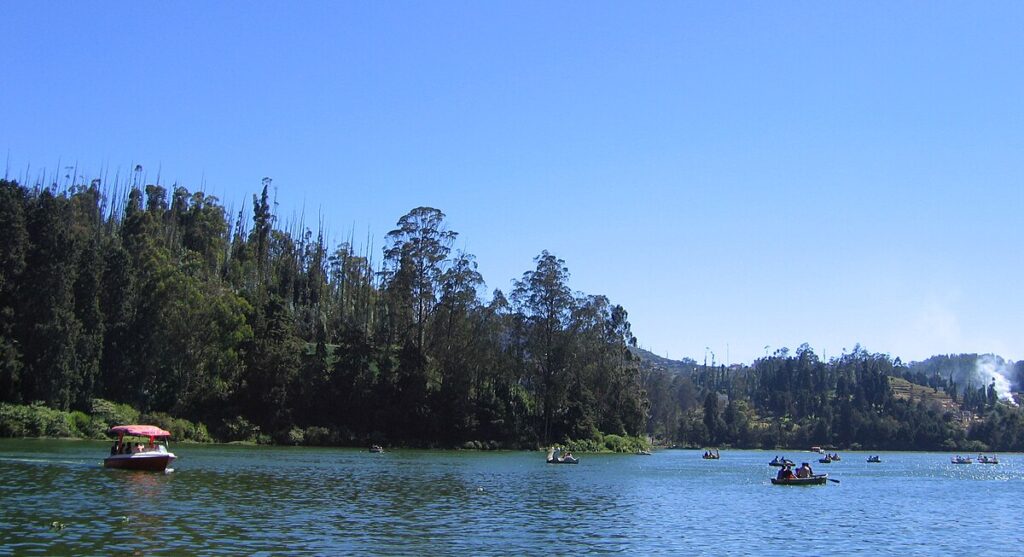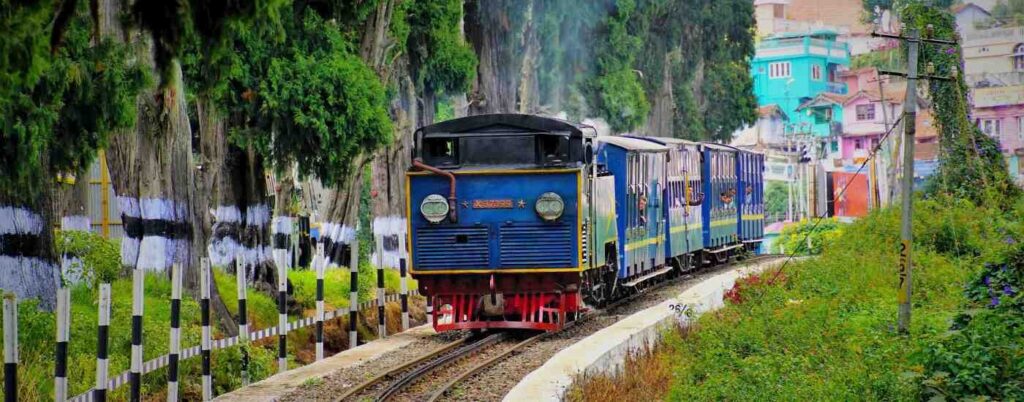Out and About Ooty

1. Geographical & Ecological Profile
Location: Nilgiri Mountains, Western Ghats (Tamil Nadu)
Altitude: 2,240 meters (7,350 ft)
Coordinates: 11.41°N 76.70°E
UNESCO Status: Part of Nilgiri Biosphere Reserve (2012)
Climate Data (IMD 2023)
- Annual Temperature: 5°C (min) to 25°C (max)
- Rainfall: 1,250 mm (60% during SW monsoon)
- Unique Feature: Only Indian hill station with natural grasslands (Sholas)
2. Historical Evolution
Pre-Colonial Era:
- Home to Toda tribes (UNESCO-recognized indigenous community)
- Known as “Ottakal Mandu” (Single Stone Village) in Badaga language
Colonial Development:
- 1821: Founded as sanatorium by John Sullivan (Madras Governor)
- 1891: Nilgiri Mountain Railway construction began (now UNESCO World Heritage Site)
Post-Independence:
- 1986: Declared “Queen of Hill Stations” by TN Tourism
- 2020: Smart City Project launched (₹1,000 crore investment)
3. Key Attractions (Scientifically Significant)
3.1 Government Botanical Garden
- Established: 1848 (48 acres)
- Rare Species:
- 20-million-year-old fossilized tree
- Nilgiri Tahr conservation area
- Research Value: Houses 650+ plant species used in Ayurvedic studies
3.2 Ooty Lake
- Man-made (1825): Originally for irrigation
- Ecological Study: 2019 water analysis showed:
- pH 6.8 (ideal for rainbow trout)
- Dissolved Oxygen: 7.2 mg/L
3.3 Nilgiri Mountain Railway

- Engineering Marvel:
- 46 km track with 208 curves
- Operates at 14 kmph avg speed (slowest in India)
- Heritage Data: Uses X Class steam engines (last remaining globally)
4. Biodiversity Research
Flora
- Endemic Species:
- Kurinji (Strobilanthes kunthiana) – Blooms every 12 years (next: 2030)
- Nilgiri Rhododendron (State flower)
Fauna
- Critical Habitat for:
- Nilgiri Marten (Only marten in India)
- Indian Bison (Gaur density: 9.2/sq km per WII 2022 study)
5. Agricultural Economy
Tea Plantations
- Annual Production: 25 million kg (2023 Tea Board data)
- Unique Varietal: “Nilgiri Frost Tea” (Winter-harvested)
Other Crops
- English Vegetables: Introduced by British (carrots, cabbage)
- Apiculture: 320+ registered beekeepers (TN Agri Dept)
6. Tourism Patterns (TN Tourism Board 2023)
| Parameter | Data |
|---|---|
| Annual Visitors | 4.2 million |
| Peak Season (Apr-Jun) | 58% of yearly tourists |
| Avg Stay Duration | 2.8 nights |
| Revenue Generation | ₹1,850 crore/year |
7. Environmental Challenges
- Plastic Waste: 12 tonnes/day (70% from tourism)
- Invasive Species: Lantana covers 18% of grasslands (Forest Dept 2023)
- Climate Impact: 0.8°C temp rise since 1990 (IMD)
8. Cultural Tapestry
Tribal Communities
- Todas: Known for barrel-vaulted huts and embroidery
- Kotas: Traditional blacksmiths
Festivals
- Tea & Tourism Festival (Jan): Showcases 150+ tea varieties
- Summer Festival (May): Flower shows since 1896
9. Best Time to Visit (Micro-Season Guide)
| Period | Characteristics |
|---|---|
| Feb-Apr | Rhododendron blooms |
| May-Jun | Peak tourist season |
| Sep-Oct | Post-monsoon greenery |
| Dec-Jan | Frost mornings (2°C) |
10. Sustainable Travel Tips
- Use NMR Toy Train (Carbon footprint: 0.12kg CO2/km vs 1.2kg by car)
- Stay in Heritage Bungalows (37 colonial-era properties available)
- Support Toda Crafts (Authentic embroidery starts at ₹1,500)
Conclusion
Ooty represents a unique confluence of colonial history, ecological wealth, and tribal heritage. With climate-adaptive planning now prioritizing eco-tourism, visitors can experience its magic responsibly.
For Research-Backed Itineraries:
📞 TN Tourism Helpline: 1800-425-31111
🌐 Live Weather: www.imd-ooty.gov.in
(Sources: TN Forest Dept, UNESCO, Tea Board of India, Wildlife Institute of India)

